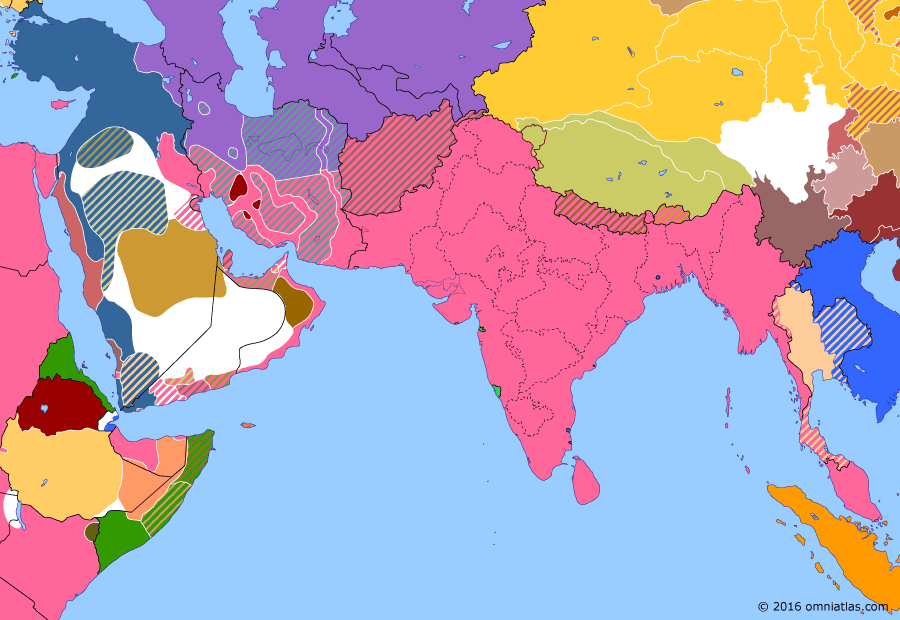Southern Asia 1917: Sinai Campaign and Battle of Aqaba
6 July 1917
6 Jul 1917
Great War in the Middle East
1880–1914 Pax Britannica
1914–1917 Great War in the Middle East
1917–1918 Fall of the Ottoman Empire
1918–1923 Anglo-French Overreach
1923–1934 Rising Nationalism
1934–1940 Arrival of the New Order
1940–1941 World War II: The Middle Eastern Theater
1941–1945 World War II: The South-East Asian Theater
1945–pres Independence
Sinai Campaign and Battle of Aqaba
6 Nov 1914 Outbreak of the Great War
29 Dec 1914 Battle of Sarikamish
29 Jan 1915 Ottoman Raids in Persia and Sinai
28 Apr 1915 Gallipoli Campaign
14 Sep 1915 Niedermayer-Hentig Expedition
22 Nov 1915 Persian Campaign
5 Jan 1916 Siege of Kut
21 May 1916 Russian invasion of Anatolia
9 Jul 1916 Arab Revolt
30 Nov 1916 Pacification of South Persia
11 Mar 1917 Mesopotamian Campaign
6 Jul 1917 Sinai Campaign and Battle of Aqaba
While the British were advancing on Baghdad, they were also reconquering the Sinai Peninsula and ending the Ottoman threat to the Suez Canal. Although this Sinai campaign was brought to a halt by Ottoman defenses in southern Palestine, British support of the Arab Revolt was by now bearing fruit. The Arabs, joined by the British military advisor T. E. Lawrence, had taken most of the Hejaz and now marched north, seizing the vital Red Sea port of Aqaba and threatening Palestine from the southeast.
